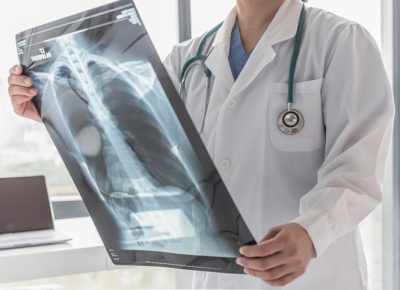 There are times when your provider might need an X-ray to help make a diagnosis and to help with your treatment plan. For your convenience, we offer onsite X-ray services at all the Urgent Care locations. You will learn your test results in approximately 15-20 minutes.
There are times when your provider might need an X-ray to help make a diagnosis and to help with your treatment plan. For your convenience, we offer onsite X-ray services at all the Urgent Care locations. You will learn your test results in approximately 15-20 minutes.
Here are some X-ray FAQs:
What might I need an X-ray for?
Your medical provider might order an X-ray to evaluate medical conditions, to detect signs of disease and to aid in diagnosis. While X-rays are primarily used to look at your joints and bones, they sometimes can reveal problems affecting your internal organs and other soft tissues.
An X-ray can detect many health issues, including:
- Broken bones, sprains and fractures
- Kidney stones
- Lung problems, such as pneumonia or a stubborn cough
- Difficulty swallowing
- Heart problems
- An X-ray also is required for an immigration physical
How do X-rays work?
X-rays use low-level radiation that travel through your body. X-rays are absorbed in different amounts by the various tissues in your body depending on the density of your bones and tissues.
Your bones, for example, absorb a lot of X-ray energy, causing the bones to appear in high-contrast shades of white on an X-ray film. Your doctor reads these images to evaluate your health condition.
What should I expect during an X-ray?
Everest Urgent Care offers the convenience of onsite X-ray services. During an X-ray, you lie on an exam table or stand against a flat surface. A technician positions the area of your body that is being X-rayed and you are asked to remain very still. The X-ray itself takes only a second. You will not feel anything during the process.
The technician may position you to take X-rays from different angles to provide your medical provider with as much information as possible. The entire procedure usually takes just a few minutes.
You typically find out the results of your X-rays within 15-20 minutes. Your medical provider will discuss the results and recommend follow-up treatment when needed.
Are X-rays safe?
You might have heard about the risks of radiation exposure during an X-ray. However, the X-rayed area of your body is exposed to a low level of radiation for a fraction of a second. In addition, the diagnostic benefits of X-rays greatly outweigh the risks.
Generally, the amount of radiation in an X-ray is minimal. The effects are no different than the cumulative effect of radiation you are exposed to in the environment as you go about your day.
